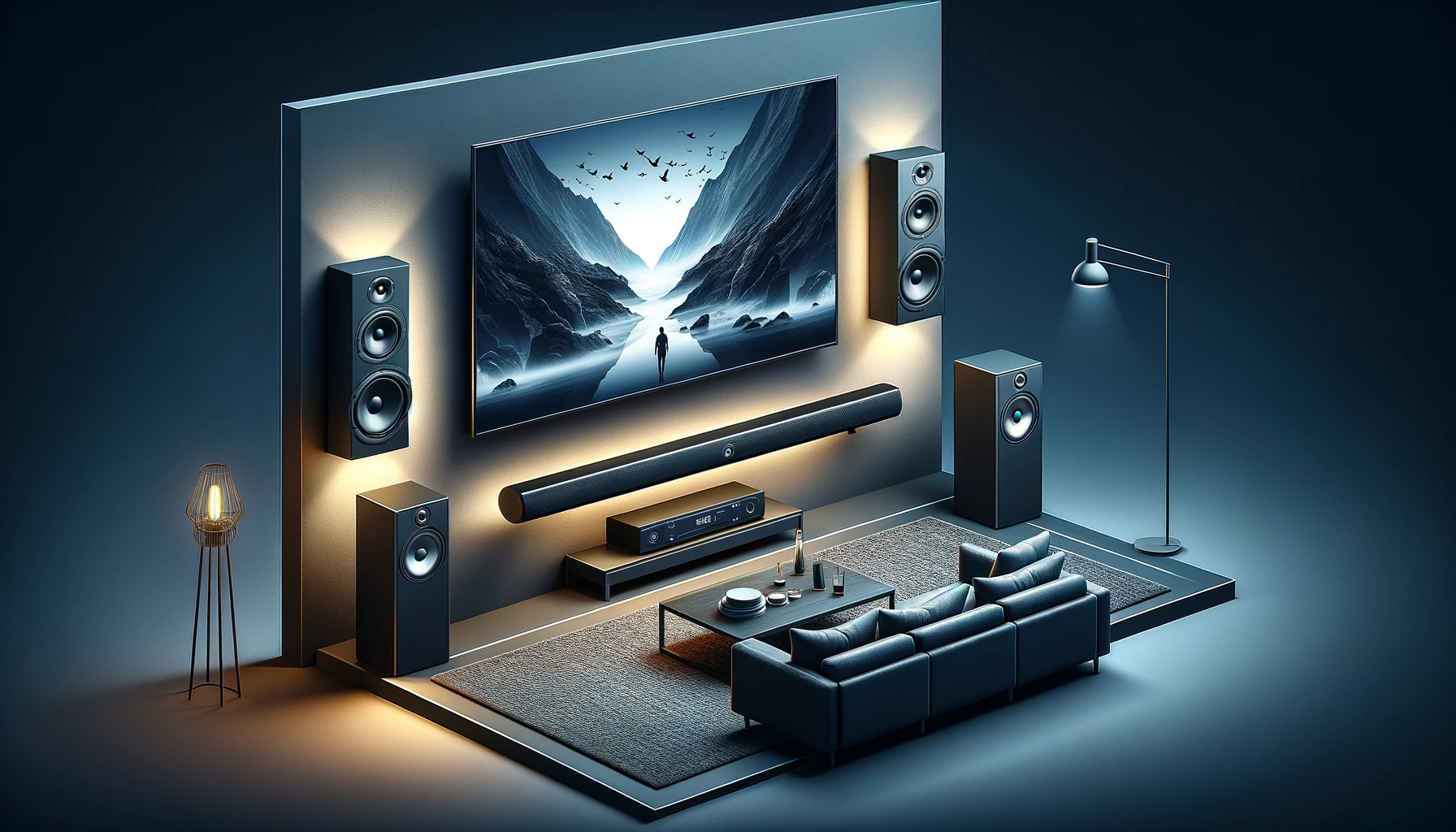I want a sleeker wall-mounted home theater look but can I actually mount my new soundbar securely?
Thankfully most contemporary soundbars integrate universal mounting hardware specifically allowing different wall-mounted placements.
Let’s examine popular mounting approaches to streamline audio-visual systems and flood rooms with phenomenal stage-matched sight and sound.
Soundbars Easily Mount Above, Below or Beside TVs
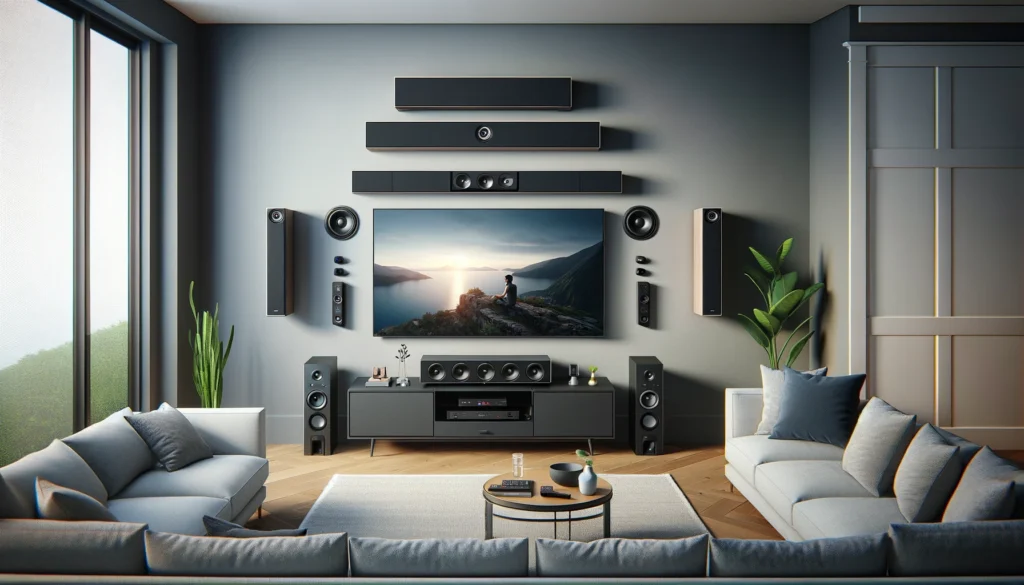
The good news – modern soundbars widely feature mounting holes and rear brackets specifically allowing secure attachment to walls and specialty stands using screws or articulating arms.
We’ll cover what to consider when planning placements centered above or underneath displays for a consolidated entertainment system with optimized acoustics.
Soundbar Design and Mounting
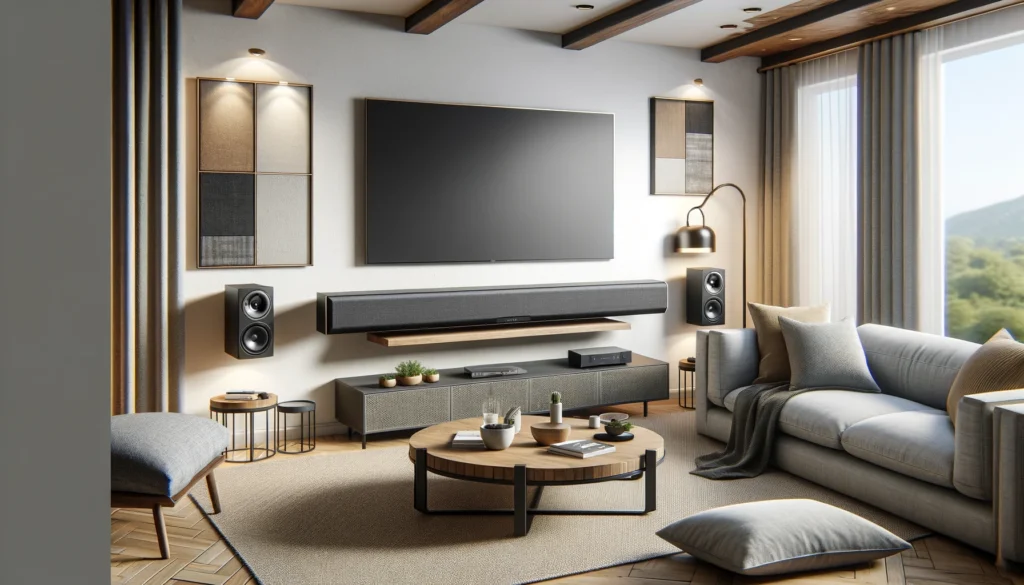
The vast majority of contemporary soundbar models feature elongated rectangular prism shapes ranging from compact 2.0 channel designs around 25 inches wide to larger 5.1.2 Dolby Atmos-enabled soundbars approaching 40 inches.
Depth and height typically span just a couple inches permitting placement in front of screens or right underneath mounted displays.
Constructed using wood, metal, glass and plastics, better soundbars integrate mounting holes and brackets along the rear panel or bottom facilitating secure attachment on walls or special stands.
More affordably-priced lightweight models may skip mounting provisions expecting primarily table positioning.
However, consumers valuing cleaner aesthetic appearances uniformly benefit from properly mounting soundbars whether above, below or tilted alongside flat panel televisions utilizing dedicated brackets.
Carefully applied hardware helps form seamlessly unified entertainment centers ready for stunning audiovisual performances.
Providing consumers flexibility suiting room arrangements and personal preferences, soundbar manufacturers wisely incorporate universal mounting accommodate different installations.
The three most common soundbar mounting applications include first centering the speaker bar right above screen center to avoid conflicting with view lines.
Second, attaching below display panels creates an orderly consolidated stack with audio origin visibly linked to video sources. Third, tilting or angling side mounts direct soundbars to face primary seating areas ensuring centered sweet spot delivery.
Each approach has merits for owners weighing priorities like integrating the latest thin screens or producing optimal audio distribution. Thankfully universal mounting holes standardize attachments.
Wall Mounting Considerations
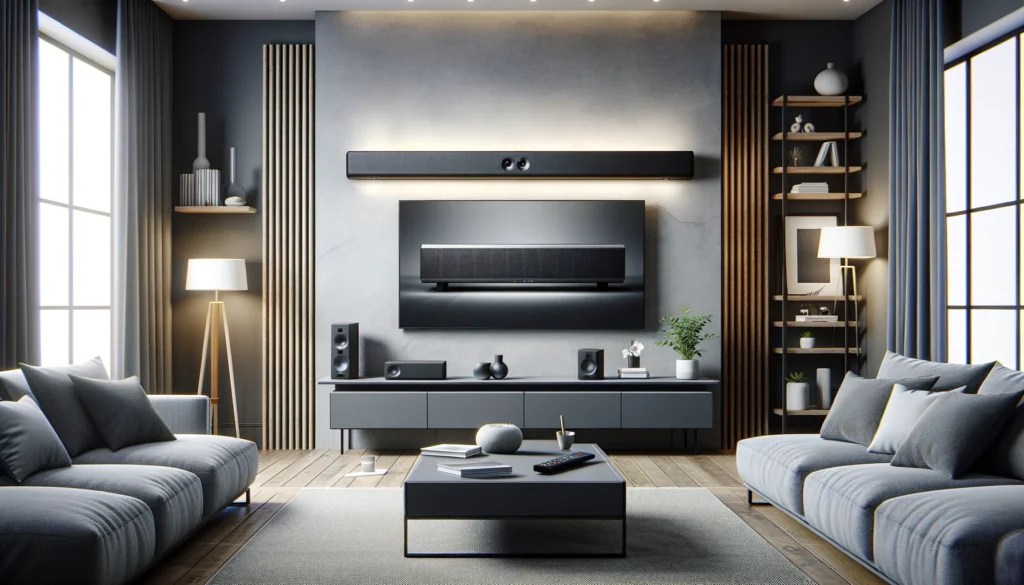
When planning to mount soundbars securely on wall surfaces using brackets, several factors come into play that informed buyers should evaluate beforehand.
Most critically, verify that chosen mounting locations feature studs or reinforced drywall strong enough to support sustained soundbar weight without future risk of collapse or accidents.
While compact models weigh under 10 pounds, heavier speakers with wireless subwoofers scale over 30 pounds demanding robust anchoring.
Materials like plaster or fragile drywall require additional bracing to avoid crumbling over time especially in high traffic areas. Thankfully external wall brace solutions reinforce problematic spaces.
Additionally, match mount heights to room acoustics and audience sight lines. Elevated positions angled downwards beneft audio dispersion reaching far seats but casts shadows on TV screens for some viewers.
Lower soundbar mounts conserve visibility while trading ideal sound projection to rear seats. Cleaning access and wire management needs also help dictate height preferences.
Planning ahead guarantees properly stable and optimized mounting maximizing enjoyment for all while minimizing headaches.
Above TV Placement

Positioning soundbars directly above complementary flatscreen televisions using dedicated wall mounts offers intuitive centralized audio-visual sources from single furniture focal points.
The natural horizontal pairing keeps media outputs unified for easy intuitive interaction without divisive separation.
Even compact speaker bars with smaller footprints aesthetically balance wider screens projecting stereo or 3D soundscapes seemingly from displayed images themselves thanks to close symmetrical alignment.
However, limitations like video blocking and suboptimal sound firing angles may results for some above TV soundbar installations.
For example, larger display sizes exceeding 65 inches obligate mounting bars exceedingly high risking obscured lower screen views. Additionally, excessive height misaligns or misses seated viewers expecting direct center-aimed sound.
Careful measurement helps determine optimal balance between clean consolidated appearance and practical performance accommodating actual rooms and gear. Getting positioning right proves essential for truly synergistic sight and sound.
Under TV Placement

Mounting slim-profile soundbars under wall-mounted flatscreen TVs directly addresses visibility and audio projection issues sometimes encountered placing above displays.
Keeping bars right underneath screens maintains a tight visual relationship allowing audio to seem emanating from onscreen events. Lower positions also better angle speakers towards central seats for proper stereo imaging rather than over people’s heads.
Plus integrating Playbars like the Sonos Beam with support for Dolby Atmos height channels actually benefit from bounce and reflection off hard ceilings.
Of course, limitations imposed by low-profile stands or maximum mounting heights restrict dropping bars too far below screens.
Accommodating larger front-firing subwoofers or standalone center speakers also introduces logistical challenges.
While usually preferable for performance and aesthetic simplicity, individual gear combinations impact practical under TV soundbar mounting effectiveness. Getting arrangements right satisfying both factors remains key.
Some trial and error dialing balance using adjustable brackets finds ideal presentation.
Angled Mounting Options

Both above and below TV mounting typically presumes straight front-facing soundbar positioning to approximate in-plane speaker alignments present at cinemas and recording studios.
However, the advent of tilting wall brackets enables new angled mounting options for directing stereo or surround firing angles towards centrally located seating zones.
Articulating arms gradually shift soundbars from completely horizontal to partially angled downward or upward depending on specific room seat distribution and acoustic treatment.
Properly executed, optimized angles guide audio to envelop listeners rather than dissipating sound firing parallel walls or over the audience. Mounts granting as much as 15 degrees of tilt capability best accommodate variable theater layouts.
Thoughtfully achieved staging through considered soundbar angling grants listeners spectacular clarity and spatial immersion enhancement absent from default flat positioning.
Of course, articulating bracket mounts require carefully integrated installs accounting for television sizes, nearby obstructions, and range of motion limitations to actually prove effective.
Poor implementations fail better targeting seat groupings wasting the capability. But smartly elevating or dropping top edges based on careful room evaluation enables remarkable sound improvements from previously adequate soundbars.
Getting angles right unlocks clearer dialogue, tighter bass and lifelike atmosphere.
Tabletop Use vs. Wall Mounting
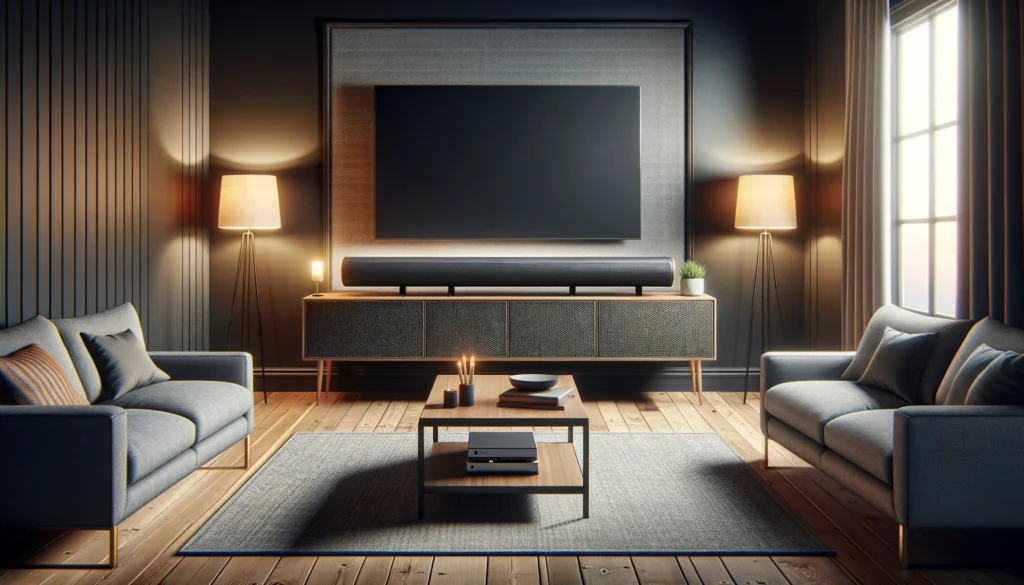
Despite the widespread accessibility of soundbar wall mounting kits, many owners opt for traditional tabletop placement resting speaker bars in front of screens atop media consoles and shelves.
Certain practical factors continue favoring freestanding soundbar arrangements. Adjustable stands allow owners manually redirecting speakers towards temporary seating locations as needed unlike fixed wall mounts limiting directionality.
Tabletop use also avoids installing mounting hardware on fragile walls or complicated wire routing issues to consider. Owners renting houses or apartments may forbid drilling holes or leaving marks for brackets.
And soundbars lacking mounting features inherently depend on horizontal surfaces for positioning help.
However, as home theaters shrink physical footprints through thinner wall-mounted displays, finding sufficient shelves or space centering tabled soundbars gets problematic without cluttering viewing zones.
Lower positions also risk pets or kids disturbing speakers through accidental contact. More impactful bass and clearer audio projection typically accompany properly wall-mounted bars versus tabled units.
So while simplistic placements work for secondary rooms, dedicated soundbar mounts better complement premium tier home theaters.
Just ensure latent mounting flexibility or wire management needs don’t outweigh cleaner appearances or audio alignment benefits that wall brackets enable. Both options serve distinct use cases.
Installing the Mounting Hardware

Executing soundbar wall mounting installations demands careful planning and methodical process for optimizing stability while integrating wiring through to power outlets safely out of sight.
First determine ideal display height and location clearing walking paths and furniture. Mark positions assuring central visibility for majority of seated viewers to prevent audio originating from extreme edges.
Next select suitable mounting fasteners like brackets or articulating arms that clear television widths when folded. Consider integrated cable routing capacity as well to hide HDMI, optical and power cords.
Finally follow hardware manufacturer’s guidance drilling pilot holes and securely installing mounts without penetrating electrical, plumbing or ventilation. Repeatedly check stability before attaching soundbar and confirming ideal extension angles if adjustable.
Take pains getting mountings right the first time. Wall repairs or repositioning proves difficult if choices fail working harmoniously with rooms and gear.
But properly installed mounts keep soundbars securely anchored while streamlining system tidiness through concealed cabling.
Follow best practices and both displays and audio output remains protectively positioned for many years of uncompromised performance potentially outlasting the electronics.
Conclusion
In conclusion, the vast majority of modern soundbars feature mounting holes or brackets for securely attaching above, below or beside TVs using dedicated wall mounts.
While tabletop use remains popular for simplicity’s sake, properly mounted soundbars streamline room aesthetics through consolidated installation and concealed cabling for a clean entertainment center look.
Evaluating viewing priorities and room factors before purchase enables obtaining optimal gear with suitable mounting provisions and stand sizes for seamlessly unified immersive experiences going forward.
